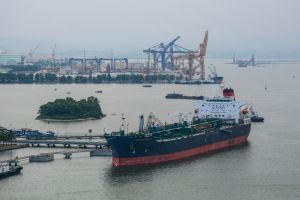Vietnam’s economy has been boosted by almost 8 per cent because of the shift in production resulting from the US-China trade war, according to analysis by Japanese investment bank Nomura. Photo: Alamy
On June 5, 2019, Sidney Leng writes on South China Morning Post:
- The economy of the southeast Asian nation was boosted by almost 8 per cent due to the shift in production as importers sought to avoid Donald Trump’s tariffs
- Analysis by Japanese investment bank Nomura also shows that trade diversion benefited Taiwan, South Korea, Chile, Malaysia and Argentina
Vietnam is the biggest winner from the shift in supply chains caused by the nearly year-long trade war between China and the United States, according to a report, as importers from the world’s two largest economies sought to avoid paying increased tariffs.
The majority of Vietnam’s gains came from additional imports of goods covered by US tariffs on China, mainly electronic apparatus for telephones, furniture and automatic data process machines, likely because multinationals could swiftly relocate to factories outside China, the analysis said. A small portion came from China’s additional import of boards, panels, uncombed single cotton yarn, cotton and other electrical appliances from Vietnam instead of the US.
Diversion of US imports of goods, such as electronics, have also favoured Taiwan and South Korea, traditionally big manufacturers of such products. Furthermore, as China searched for new suppliers of agricultural goods such as soybeans and major commodities including copper, Chile, Malaysia and Argentina also stood out as beneficiaries.
However, it should be noted that the economies of Taiwan and South Korea are heavily exposed to fluctuations in the Chinese market. Korean gross domestic product (GDP) for the first quarter shrank by 0.4 per cent from the final quarter of 2018, data released on Tuesday showed.
Taiwan’s exports, meanwhile, shrank by 3.3 per cent in April from a year earlier, meaning that despite the fact that it is picking up some of China’s trade diversion, it is suffering as a result of lower demand in China, which is by far its largest trading partner, accounting for 28.8 per cent of total exports.
“Importantly, these results suggest that if the US follows through on its threat to impose 25 per cent tariffs on its remaining US$300 billion of imports from China, it could lead to substantially more import substitution, given that a much larger proportion of this tranche of imports comprises of electronic products,” Nomura’s analysts wrote.
These results suggest that if the US follows through on its threat to impose 25 per cent tariffs on its remaining US$300 billion of imports from China, it could lead to substantially more import substitution
Nomura found that 12 out of the top 20 companies listed on the American S&P 500 stock index with net sales in China were electronic companies with a combined revenue of US$144 billion last year. The US is now soliciting public comments on the Trump administration’s plan announced in May to impose tariffs of up to 25 per cent on the remaining US$300 billion worth of Chinese goods, with a hearing set to take place on June 17. If a similar pattern to previous tariff imposition is followed, the next raft could be in place as early as July.
“If recent US business restrictions on China’s Huawei and ZTE technology companies escalate into a ‘cold war’ on technology, the potential for major reallocation of global value chains should not be underestimated, as China’s tech giants shift from US suppliers to local ones, and as multinationals through the supply chain turn to new suppliers and customers,” the report said.
The shift in supply chains has shaved 0.5 per cent from China’s GDP this year, compared with 0.3 per cent in the US, since exports to US made up a larger share of China’s economy, according to the research.
In terms of the value of goods, the US has been able to find more alternative sources for its imports than China. Around two-thirds of Chinese products hit by US tariffs by volume, or 86 per cent by value, were able to be substituted by goods from other countries.
China was able to find alternative sources for 41 per cent of goods tariffed by the US by volume, or 68 per cent in value terms.
However, Nomura’s analysts were keen to point out that the economic uncertainty caused by the trade war, along with a general slowdown in global demand, tempered the overall benefit felt by any third economy in the equation.
Furthermore, tariffs on both sides mean that companies in the midst of the global supply chain are losing out, even if other companies are picking up additional business.
“Higher US tariffs penalise not only the assembler of the product, but also suppliers through the value chain, and smaller Asian economies are particularly vulnerable, given Asia’s elaborate value chains with China at the epicentre,” the report concluded.


